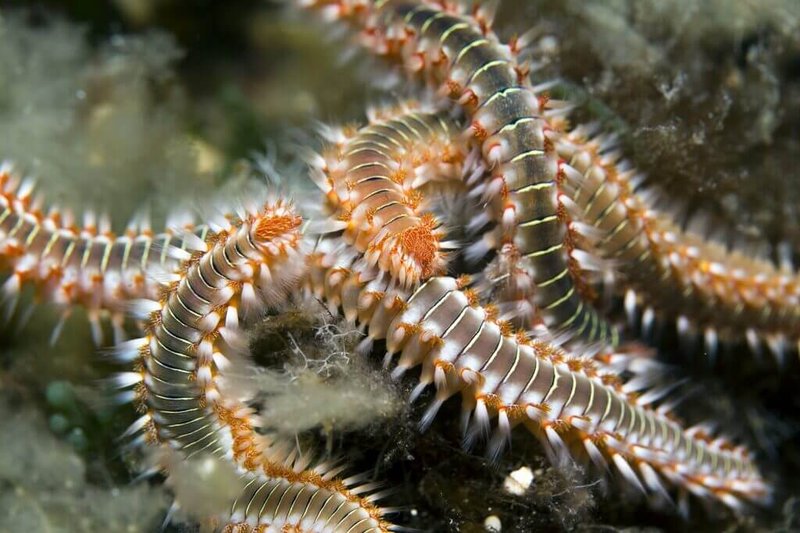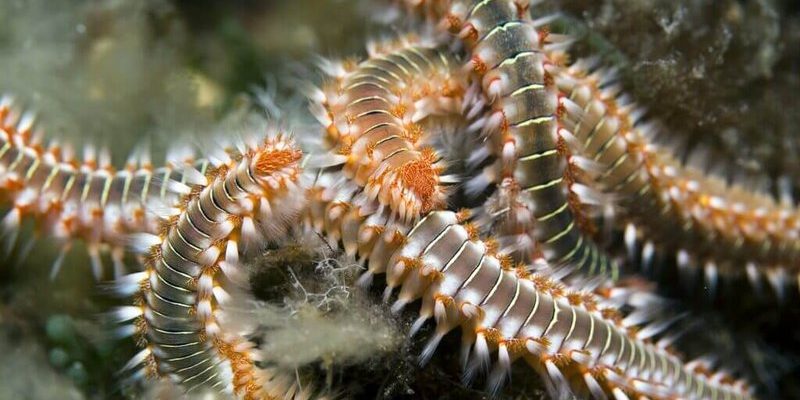
Bristle worms belong to a larger family of worms known as polychaetes. While most bristle worms are harmless and even beneficial to reef systems, certain species can wreak havoc by consuming corals and other vital marine life. So, how do you tell the difference between the good guys and the bad guys? Let’s dive in and see how to spot those pest species of bristle worms, and more importantly, what you can do about them.
What Are Bristle Worms?
Bristle worms are segmented worms that can be found in various marine environments, from coral reefs to sandy ocean floors. They’re called bristle worms because of the tiny, bristle-like structures called *chaetae* that cover their bodies. These structures help them move through the substrate and can also serve defensive purposes.
Honestly, bristle worms can be quite striking. Some are a vibrant red or green, while others may be more muted browns and blacks. They vary in size, ranging from just a few millimeters to several feet long. While they usually stay out of sight, they can suddenly appear, especially when conditions in your tank change or pollutants enter the water.
In aquariums, bristle worms play a crucial role in decomposing organic matter. They help clean up leftover food and detritus, making them a part of the natural cleanup crew. However, it’s the pest species that you need to watch out for. Their voracious appetite can lead to disastrous effects on your corals and other marine life.
Identifying Common Pest Bristle Worms
So, how do you identify the pest species among the friendly ones? A few key characteristics can help you distinguish the harmful bristle worms from the harmless ones.
Most pest bristle worms have longer bodies with numerous bristles, giving them a distinct appearance when compared to their harmless cousins. For example, the *Eunice aphroditois*, also known as the giant bristle worm, can grow up to 3 feet long! You might be wondering why such a long creature can be problematic. Well, these bad boys not only consume excess food but can also feast on corals, creating chaos in your aquarium.
Another common pest species is the *Nereis virens*, often referred to as the clam worm. It has a more robust body and is usually found in larger numbers. This worm can also exhibit aggressive behavior, which makes it a concern for aquarium owners.
To spot these pests, keep an eye out for:
- Long, segmented bodies
- Brilliant colors (red, green, purple)
- Rapid movement, especially at night
Behavior and Habitat of Pest Bristle Worms
Understanding where and how bristle worms live can give you clues about their presence. Most bristle worms are nocturnal, so you may not see them during the day. Instead, they tend to emerge at night, often when your lights go out. If you find yourself peeking into your aquarium after hours, you might spot them wriggling around.
Bristle worms thrive in environments rich in organic matter, such as areas with leftover food or decaying plant material. In an aquarium, they often make their home in the substrate or live rock, where they can burrow and hide. Here’s the thing: while they’re part of the natural ecosystem, an overpopulation can cause problems.
If you notice a sudden surge in their numbers, it might be time to investigate. Pest bristle worms can spread quickly when conditions favor them, like excess nutrients or waste. Maintaining a clean tank environment can help keep their populations in check.
How to Spot Infestations Early
Catching a bristle worm problem before it escalates is key to maintaining a healthy tank. Here are a few signs to watch for:
– Coral Damage: If you notice your corals looking ragged or damaged, it might be a sign of bristle worm activity. They can consume coral tissue, which leads to stress and even death for your corals.
– Increased Worm Sightings: If you’re observing more bristle worms than usual, especially during the day, it’s time to take action. The more you see, the more likely they are to be pests rather than benign inhabitants.
– Bristles Left Behind: If you see bristles or segments shed in your aquarium, that could signal that the worms are struggling to find enough food or space.
Being proactive in your monitoring will help you tackle any infestations quickly. Regular tank assessments and water testing can also help you catch changes in the environment that might favor pest species.
Effective Management Strategies
So, what can you do if you discover pest bristle worms in your tank? There are a few management strategies you can implement to keep them under control.
1. Manual Removal: If you see a worm, you can often remove it by hand (make sure to wear gloves!). This can be effective for smaller infestations. Just be cautious, as some worms can bite if threatened.
2. Trap Them: Setting up traps can help catch pest bristle worms before they become a bigger issue. You can create a simple trap using bait and a container—just ensure it’s something they’re attracted to!
3. Limit Organic Matter: Reducing leftover food and waste in your aquarium will limit the food supply for bristle worms. Regular tank maintenance, including vacuuming the substrate and removing uneaten food, can be a game-changer.
4. Introduce Natural Predators: Certain fish or invertebrates, like some wrasses, can help keep bristle worm populations in check. Just make sure any new addition is compatible with your existing tank inhabitants.
When to Call for Help
If you’ve tried the above methods and still see an explosion of bristle worms, it might be time to seek help from a professional aquarist or a marine biologist. Sometimes, your best efforts aren’t enough to battle a full-blown infestation.
Additionally, if you’re unsure about identifying the species or determining the severity of the problem, consulting with an expert can provide peace of mind. Sometimes, it’s just about having someone with experience take a look and give you a clearer path forward.
Spotting pest species of bristle worms in your aquarium doesn’t have to be an overwhelming task. By staying vigilant and knowing what to look for, you can enjoy the beauty of your marine ecosystem while minimizing potential disruptions. From recognizing their physical traits to understanding their behavior and implementing effective management strategies, small steps can lead to big wins. Remember, a clean tank is not just a happy tank; it’s a thriving habitat for all your aquatic friends!

